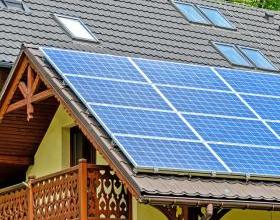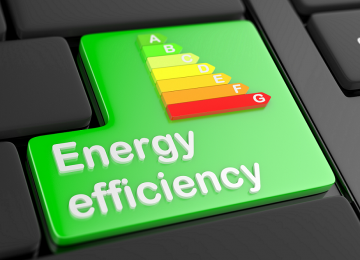What is ESU Efficient Systems of Utility?
What are ESU? As we have explained before, Esu are the "Efficient Systems of Utility ", that is production systems and electric consumption that connect the producer and the final consumer through a direct connection. In fact, this would represent their main advantage. This new possibility is very convenient for anyone who wants to make photovoltaic systems without their own self-consumption.
We keep in mind that the self-consumption of the energy produced by a photovoltaic system is certainly the most profitable modality since it represents a direct saving on the electric bill.
Wanting to exploit the benefits of self-consumption, in addition to the on-site exchange mechanism (valid for power plants up to 500 kWp) it is possible to operate according to the ESU model (Efficient Systems of Utility ) on plants with nominal power up to 20 MWp. Furthermore, the benefits deriving from the SEU model are compatible with the incentives in the Energy Account.

But are the ESU really an advantage?
As you are not convinced yet, we´ll tell you better.
If we talk about a direct connection, we also talk about eliminating all intermediaries. As systems in which photovoltaic systems directly supply the final consumer (ie companies, factories, energy-intensive facilities, etc.) without third-party connection obligations, the manufacturer can sell directly to the final consumer (usually large companies), with the advantage of bypassing the network, some intermediaries and part of their usage costs. If before the manufacturer sold to the GSE (Manager of Electrical Services) and the GSE sold the energy purchased to the general electricity market, now everything has changed.
This removal of an intermediary is appropriate both for the manufacturer, direct seller of the energy to his customer via ESU, and for the final consumer who buys directly from the manufacturer at an affordable price.
Certainly, the ESU are systems designed to facilitate and promote self-production and direct self-consumption on site of the energy produced from renewable sources, which is why these are not domestic photovoltaic systems, in residential contexts, located on the roof of home, but of large ground installations with the function of directly supplying energy to important users, such as factories, energy-intensive companies, among others, that can directly buy the energy produced locally without going to the general electricity grid. It is a system designed to favor local energy self-supply and to facilitate distributed generation. No purchase over-evaluated, you can buy much cheaper energy using the photovoltaic ESU.
The Authority for Electricity and Gas (the Aeeg) has defined the SEUs in resolution 578/2013 / R / eel (12/12/2013). This resolution, in reality, comes to regulate the "more generic" simple systems of production and consumption (SSPC), among which certainly include the Efficient System of Utility (ESU).

The system has the merit of putting energy supply and demand directly in contact with the local electricity market. Energy means, obviously, that coming from renewable sources.
From the economic point of view, it is important to underline that the energy produced by the photovoltaic system and consumed by the final customer is exempted from the payment of system charges, ie the component of the electricity bill destined to cover the costs related to activities of general interest. The end user uses the energy produced from renewable sources through a private connection to the plant "without the obligation of connecting third parties".
In other words, the owners of photovoltaic systems can sell energy to a consumer on-site at a final price that is significantly lower than the cost of withdrawing from the electricity grid.
In economic terms the advantages are obvious:
- The producer will be able to sell the energy consumed at significantly higher prices than he would receive in the event of a sale on the net (GSE Dedicated Withdrawal or Trader Sale)
- The consumer (businesses, companies, production sites in general) will be able to buy part of the energy of his needs at significantly lower prices compared to the withdrawal from the electricity grid thanks to the elimination of an intermediary
Efficient user systems are designed to favor energy self-supply, a system that facilitates and strengthens distributed generation and energy self-consumption by relieving the network of important withdrawal rates.
Technically the ESU are systems in which a plant from renewable sources or in cogeneration, within 20 MW of power, is directly connected to a single user for consumption on the spot: a single end user that can be a natural person or a legal person.
The peculiarity of Efficient User Systems is that, in addition to being localized energy self-supply systems, they are not subject to third-party connection obligations and, even if they operate within the public network, they remain systems independent of it. In other words, the SEUs do not provide for the obligation to connect to the public supply network (Enel Distribuzione) and for this reason the final customers who use them have the advantage of being able to bypass, for the self-consumption quota, relevant tariff tariff costs of the bill electricity: transmission, distribution and other general costs associated with the bill.
These systems are required to pay these fees only for the energy withdrawn from the grid, from the point of connection with it.
Simplifying to the maximum, this is the idea of the ESU: if an energy-intensive company has an adjacent land available, it can create a photovoltaic plant for self-consumption, sourcing itself directly from the plant without going through the intermediation of Enel Distribuzione. This would guarantee the company savings in distribution, transmission and other costs, making the solution a profitable and competitive solution compared to traditional electricity supply.
The customer who adheres to an Efficient System of Utility is obliged, finally, to purchase for a predefined number of years the energy made available by the manufacturer's plant. This is to ensure the right financial security for the producer who has decided to invest in the photovoltaic system.
The technical-commercial agreements between producer and consumer will have to be regulated through a specific contract, called PPA (Power Purchase Agreement). Among the variables to be taken into consideration is the duration of the agreement, the selling price, the management of the energy produced and not self-consumed.
For this reason, it is advisable to rely on a team of technical and legal experts for the definition of the technical-commercial aspects, the management of the bureaucratic process and the drafting of the PPA contract.
The plants in SEU configuration today represent the most convenient way to enhance the energy produced by photovoltaic systems installed on commercial and industrial roofs and with power exceeding 500 kWp. Furthermore, regulatory developments are expected that can extend the commercial relationship to more end consumers, as in the case of shopping centers where a single plant can supply the utilities of the various activities present in the structure.

The system has the merit of putting energy supply and demand directly in contact with the local electricity market. Energy means, obviously, that coming from renewable sources.
From the economic point of view, it is important to underline that the energy produced by the photovoltaic system and consumed by the final customer is exempted from the payment of system charges, ie the component of the electricity bill destined to cover the costs related to activities of general interest. The end user uses the energy produced from renewable sources through a private connection to the plant "without the obligation of connecting third parties".
In other words, the owners of photovoltaic systems can sell energy to a consumer on-site at a final price that is significantly lower than the cost of withdrawing from the electricity grid.
In economic terms the advantages are obvious:
- The producer will be able to sell the energy consumed at significantly higher prices than he would receive in the event of a sale on the net (GSE Dedicated Withdrawal or Trader Sale)
- The consumer (businesses, companies, production sites in general) will be able to buy part of the energy of his needs at significantly lower prices compared to the withdrawal from the electricity grid thanks to the elimination of an intermediary
Efficient user systems are designed to favor energy self-supply, a system that facilitates and strengthens distributed generation and energy self-consumption by relieving the network of important withdrawal rates.
Technically the ESU are systems in which a plant from renewable sources or in cogeneration, within 20 MW of power, is directly connected to a single user for consumption on the spot: a single end user that can be a natural person or a legal person.
The peculiarity of Efficient User Systems is that, in addition to being localized energy self-supply systems, they are not subject to third-party connection obligations and, even if they operate within the public network, they remain systems independent of it. In other words, the SEUs do not provide for the obligation to connect to the public supply network (Enel Distribuzione) and for this reason the final customers who use them have the advantage of being able to bypass, for the self-consumption quota, relevant tariff tariff costs of the bill electricity: transmission, distribution and other general costs associated with the bill.
These systems are required to pay these fees only for the energy withdrawn from the grid, from the point of connection with it.
Simplifying to the maximum, this is the idea of the ESU: if an energy-intensive company has an adjacent land available, it can create a photovoltaic plant for self-consumption, sourcing itself directly from the plant without going through the intermediation of Enel Distribuzione. This would guarantee the company savings in distribution, transmission and other costs, making the solution a profitable and competitive solution compared to traditional electricity supply.
The customer who adheres to an Efficient System of Utility is obliged, finally, to purchase for a predefined number of years the energy made available by the manufacturer's plant. This is to ensure the right financial security for the producer who has decided to invest in the photovoltaic system.
The technical-commercial agreements between producer and consumer will have to be regulated through a specific contract, called PPA (Power Purchase Agreement). Among the variables to be taken into consideration is the duration of the agreement, the selling price, the management of the energy produced and not self-consumed.
For this reason, it is advisable to rely on a team of technical and legal experts for the definition of the technical-commercial aspects, the management of the bureaucratic process and the drafting of the PPA contract.
The plants in ESU configuration today represent the most convenient way to enhance the energy produced by photovoltaic systems installed on commercial and industrial roofs and with power exceeding 500 kWp. Furthermore, regulatory developments are expected that can extend the commercial relationship to more end consumers, as in the case of shopping centers where a single plant can supply the utilities of the various activities present in the structure.





